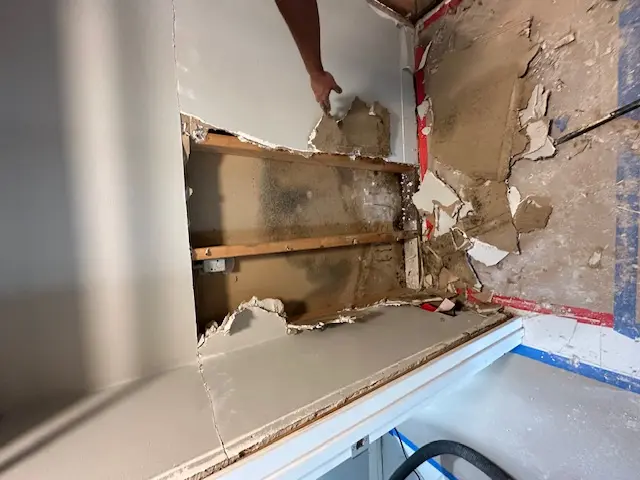6 Tips to Prevent Mold After Water Damage: The Importance of Immediate 24/7 Restoration

Experiencing water damage in your home can be incredibly distressing, and without prompt action, it can lead to a persistent and pervasive issue—mold. Mold not only damages your property but can have serious health implications as well. In this blog, we will explore six practical tips to prevent mold after water damage, emphasizing the importance of immediate 24⁄7 restoration.
1. Understanding the Risks of Mold Growth
Mold thrives in moist environments, and it can begin growing within hours after water damage occurs. It’s crucial to understand these risks so you can take immediate steps to mitigate them. Mold isn’t just an aesthetic or structural issue; it poses significant health risks. Inhaling mold spores can lead to respiratory problems, allergies, and even more severe health conditions. Understanding the nature of mold is key to preventing it—mold spores are present almost everywhere, but they require moisture to grow. Proper ventilation and control of humidity levels are essential, especially in regions prone to damp conditions or in homes that have recently experienced flooding or leaks.
2. The Importance of Quick Water Extraction
Removing standing water as quickly as possible is essential. The longer water sits, the more likely it will seep into floors and walls, creating a breeding ground for mold. Rapid water extraction should be your first priority after any water incident, utilizing equipment like wet-dry vacuums and pumps. This step is critical for minimizing damage and preventing the onset of mold. For those without immediate access to equipment, manually removing water with buckets or shovels can suffice as a stopgap measure until professional help arrives.
One important aspect of quick extraction is targeting areas where water accumulates but is not immediately visible, such as inside wall cavities or beneath floorboards. Hidden moisture can lead to significant mold problems if not promptly addressed. Utilizing moisture detection tools can be beneficial here. Quick action is vital not just to protect your home’s physical structure but to also safeguard your health against the hazards mold represents.
3. Thorough Drying Techniques
Properly drying all affected areas is key to preventing mold. Use fans, air movers, and dehumidifiers to eliminate moisture from the air and surfaces. It’s not just about drying the visible areas; thoroughness is required to ensure even the deepest layers of materials like carpet padding and drywall are moisture-free. Industrial dehumidifiers are particularly effective in drawing out moisture from these deeper layers that regular fanning might miss.
Furthermore, maintaining a steady flow of dry air through the home will also help. Opening windows and doors, where appropriate, can aid ventilation and speed up the drying process. Remember, it’s the stagnant, damp air that fosters mold growth. Continuously monitor the humidity levels within your home—keeping it below 50% can drastically reduce the possibility of mold taking root. Keeping a hygrometer on hand can help keep you informed and alert to potential humidity issues.
4. Checking Hidden Areas for Moisture
Mold can grow in hard-to-see areas like behind walls or under floors. Thoroughly inspect hidden and less obvious spots to ensure they are dry and mold-free. Areas like basements, attics, or crawl spaces are particularly prone to harboring undetected dampness, thereby becoming potential mold hotspots. Be sure to check around plumbing areas, near HVAC units, and in lesser-used rooms where leaks might have persisted unnoticed. Thermal imaging cameras can be particularly useful in detecting moisture or mold growth behind structures.
Detecting hidden mold can be challenging, as it can remain undisturbed for some time before causing visible damage or odors. By the time mold is visible, it has typically established a significant colony. Therefore, frequent and thorough inspections with moisture meters can help prevent small issues from growing into larger problems. Implementing these regular checks as part of your home maintenance routine can often preclude the need for more extensive, expensive interventions later on.
5. Using Disinfectants and Mold Inhibitors
After drying, use disinfectants on the affected areas to kill any potential mold spores. Consider applying mold inhibitors as an extra precautionary measure. Disinfectants that cater specifically to eliminating mold spores should be a part of every homeowner’s toolkit, particularly after a water event. Products like mold-inhibiting sprays can be applied to surfaces prone to moisture retention for long-term protection.
While over-the-counter products are useful on surfaces, ensuring thorough application is critical. Porous materials, like wood and fabrics, might require professional treatment, especially if contamination was extensive. It’s worth noting that some inhibitors need reapplication over time for continued effectiveness. Therefore, following manufacturers’ guidelines for use is essential to ensuring durability and efficacy.
6. Partnering With a 24⁄7 Restoration Service
A professional restoration service can provide the expertise and tools necessary to handle water damage effectively. Their 24⁄7 availability ensures that help is at hand whenever you need it. Services like Sunset Home Specialists offer comprehensive water extraction, drying, and restoration solutions, ensuring your home is quickly returned to its pre-damage state. With specialized equipment and trained professionals, they can identify and mitigate potential mold issues before they escalate.
Moreover, a seasoned restoration service can assist with the documentation needed for insurance purposes, streamlining what can often be an overwhelming process after a water disaster. Having experts on call 24⁄7 means you can address emergencies without delay, significantly reducing water damage impact and subsequent mold risk. Trusting a reliable service provider ensures that your recovery process is not only swift but stress-free.
These professionals bring a wealth of experience and access to cutting-edge technology that make them invaluable in disaster scenarios. Their rapid response and in-depth knowledge allow homeowners to focus on recovery and rearranging their lives without the burden of worrying about structural damage or health issues from mold. The peace of mind offered by knowing your home is in expert hands is truly invaluable.

